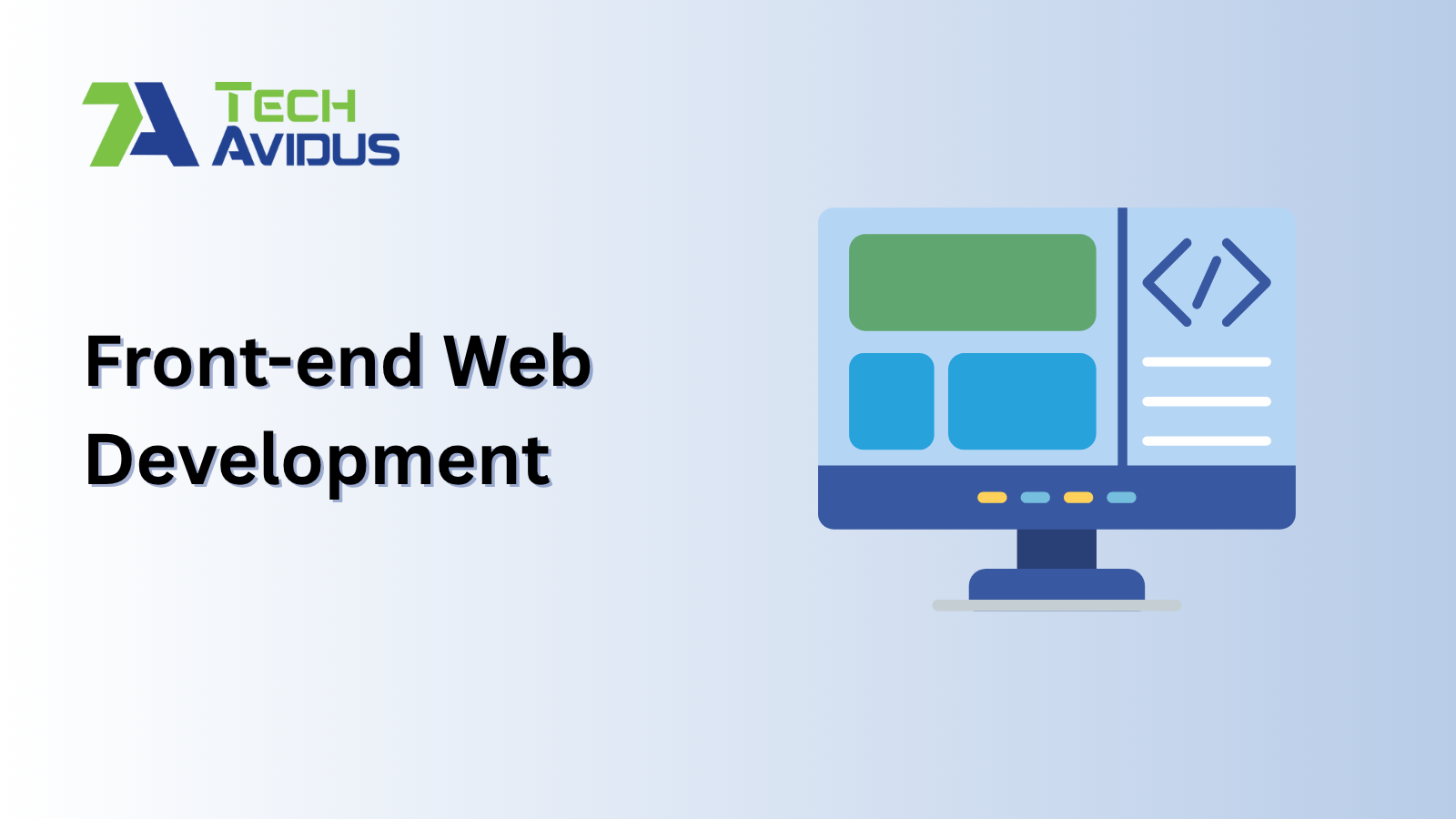
All that you see, click, and interact with on a website is because of front-end development. A site is loaded in a browser from the server in front-end development. A user sends a request to the server. The server sends the response back to the user. This framework is known as a client-server framework. Client-server frameworks use languages JavaScript, ReactJS, Vue.JS, and AngularJS. These frameworks have made interactive and mobile responsive websites possible for users. Let’s have an insight into Front-End Web Development.
The core components for all websites to run efficiently are the client, server, and database. The client is the browser a user uses to view a website using mobile devices, laptops, or desktop computers. The server is stationed at a remote location, running the website’s back-end architecture processing. Conceptually client-side scripting is done by the web browser, and server-side scripting is done by the webserver.
Client-side scripting is always evolving becoming simple, lively, and more user-friendly. Client-side scripts run in the browser and processes requests without call-backs to the server.
Server-side scripting is the back-end web development and the main function is to connect your website’s database to the browser and bring back a page to your screen providing a smooth user- experience. Server-side scripts process the data and then update the website. For example, populating drop-down menus, loading products to a page, updating a user profile, and more.
Your website comprises a sum of layers – structure, data design, content, and functionality. All that you click, interact with, and customize on a website is because of front-end development. This user-facing functionality is developed by a front-end developer. The front-end developer uses a combination of client-side scripts and frameworks, markup languages, and designs an environment where a user can experience an aura of content, layout, and interaction.
In short front-end development is a powerhouse where creativity and innovation collide. Front-end developers need to be a bridge between the designer and the back-end programmer.
The front-end developer creates interaction and user experience with scripts embedded in a website’s HTML. Everything you as a visitor to your website sees clicks or uses to input or retrieve information is the work of the front-end developer. They are the ones who create client-side software that brings the site’s design to life. Scripts are downloaded by the browser, processed, and then run apart from the server. In front development, the main focus of the front-end developer would be on user experience, and the technology they implement will determine how well it accomplishes that speed, efficiency, and smooth functionality.
The core technologies of front-end development are a mix of HTML, CSS, and client-side scripts namely Javascript.
The core competencies in hiring a front-end developer lie in his ability to have a broad view of how the front end of the site works and its design. Added crossover knowledge of SQL, Java, PHP, Ruby, Node.js, and .NET would be of great advantage to your front-end developer.
The main services of front-end developers include:
Since now you might have a brief overview of front-end technology. Let’s have a look at some of the most widely used scripting languages and front-end frameworks. The front-end languages are almost always used in the context of their frameworks, which make quick work of complicated code with libraries of pre-packaged, shareable code, and lots of add-ons. Your front-end developer may use one or a combination of these when building the front end of your website.
The front-End framework facilitates rapid development with libraries of pre-packed, shareable code and software add-ons. Some of the popular Javascript frameworks are listed below. Your front-end developer can use one or a combination of these when building the front end for a website.
A path-breaking that has changed the hard-and-fast rules for client-side vs. server-side is the AJAX technology. The old standard was that server-side processing and page post-backs were used when the browser needed to interact with things on the server, like databases. AJAX, with its asynchronous calls to the server, can pull the data instantly and efficiently, without requiring a post-back.
Another major boost is jQuery technology, a fast, small, and feature-rich JavaScript library with an easy-to-use API that works across a multitude of browsers. As code libraries do, jQuery changed the way that millions of people write JavaScript, simplifying a number of other client-side scripts like AJAX at the same time.
Technology is ever-changing and evolving, it’s crucial to know who to follow in order to get the best advice, tips, and news. We at TechAvidus have compiled a list of the top front-end developers to deliver excellence.
At TechAvidus, we have a team of multi-talented and top front-end developers having extensive knowledge and experience in the field. Therefore, creating a website for your business requirements at our place would be highly competitive and worthwhile.
Our Top 1% Tech Talent integrates cutting-edge AI technologies to craft intelligent, scalable, and future-ready solutions.
All Rights Reserved. Copyright © 2025 | TechAvidus